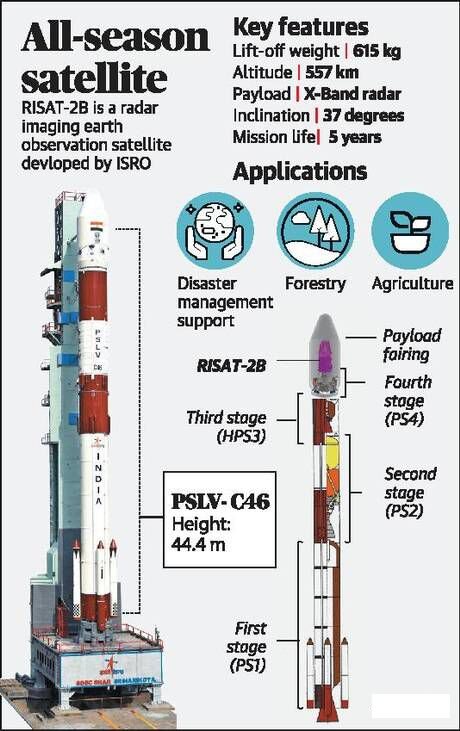Science & Technology
RISAT-2B
- 20 May 2019
- 2 min read
Radar Imaging Satellite 2B is an Indian radar reconnaissance satellite that is part of India's RISAT programme. It is built by Indian Space Research Organisation and will be launched by PSLV-C46 rocket on May 22, 2019 from the launch pad at the Satish Dhawan Space Centre.
Features
- The satellite has a mass of 615 kg and feature an X-band SAR (Synthetic Aperture Radar).
- It is built for a 5 year operational lifetime.
- RISAT 2B will be launched into a 37° inclined orbit at 555 km orbital height.
- RISAT 2B, RISAT 2BR1 and RISAT 2BR2 will be launched in 2019 on Indian PSLV launch vehicles.
Significance
- Regular remote-sensing or optical imaging satellites work like a light-dependent camera that cannot perceive hidden or surreptitious objects in cloudy or dark conditions.
- Satellites that are equipped with an active sensor, the synthetic aperture radar (SAR), can sense or ‘observe’ Earth in a special way from space day and night, rain or cloud.
- A radar imaging satellite is complex to assemble. Interpreting its images is equally complex.
- It will mark the resumption of a vital ring of Indian all-seeing radar imaging satellites after seven years.
- It will add to the reconnaissance capability from about 500 km in space. A constellation of such space-based radars means a comprehensive vigil over the country.
Applications
- In India radar imaging are used for crop estimation because our main crop growing season of kharif is in May-September when it rains and gets cloudy.
- We have used this data extensively for forestry, soil, land use, geology and during floods and cyclone.
- Due to an all-weather seeing feature, the satellite becomes special for security forces and disaster relief agencies.






